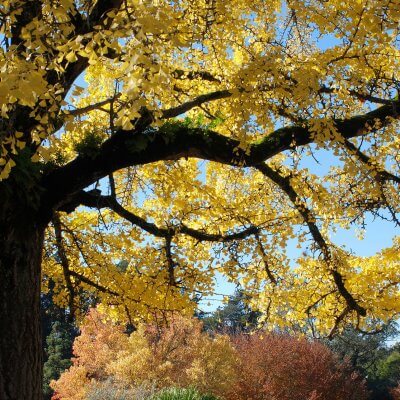Ginkgo biloba derives from the Chinese words meaning silver and apricot. As the name suggests, its homeland is Japan, China, and Korea. It is grown in many regions in our country, primarily in Izmir, Istanbul, Ankara, and Trabzon. Its light green leaves are fan-shaped. In winter, the leaves are shed.
European Engelbert Kaempfer, who first encountered this tree in the 17th century, recorded the plant with its Japanese pronunciation. However, over time, it was adopted by people as 'gingo'. In modern Chinese, its husked seeds are called 'bâi guo', 'white fruit'. This tree is also known by names such as temple tree, silver apricot, elephant ear, girl's hair, and Chinese fan pine in Turkey.
Ginkgo biloba is much more than an ordinary tree. It is a living fossil. It is a plant that lived alongside dinosaurs 270 million years ago. Ginkgos erected in temples in China are estimated to be over 1500 years old. Because of its symbolic importance in terms of Buddhism and Confucian teachings, ginkgo trees have been widely planted in China as well as Japan and Korea. It is one of the most durable tree species. It is famous for its resilience to the rapidly developing urban environment. How durable the ginkgo biloba tree is has been seen in Hiroshima. The four ginkgo trees, located 1-2 kilometers from the point where the atomic bomb exploded, were the only living creatures that survived the explosion in this area.[1]
The seeds are cooked and eaten after the flesh and fleshy shells are removed. The nutmeg kernels in its fruit are appreciated by Asian and non-Asian gourmets. It is one of the main ingredients of a traditional Chinese wedding meal (konjii). The Japanese use ginkgo in dishes like chawammushi and serve the cooked seeds as a snack alongside other dishes.
From the Ginkgo Biloba plant; ginkgo biloba tea, ginkgo biloba oil, ginkgo biloba tincture and ginkgo biloba cream are produced.
